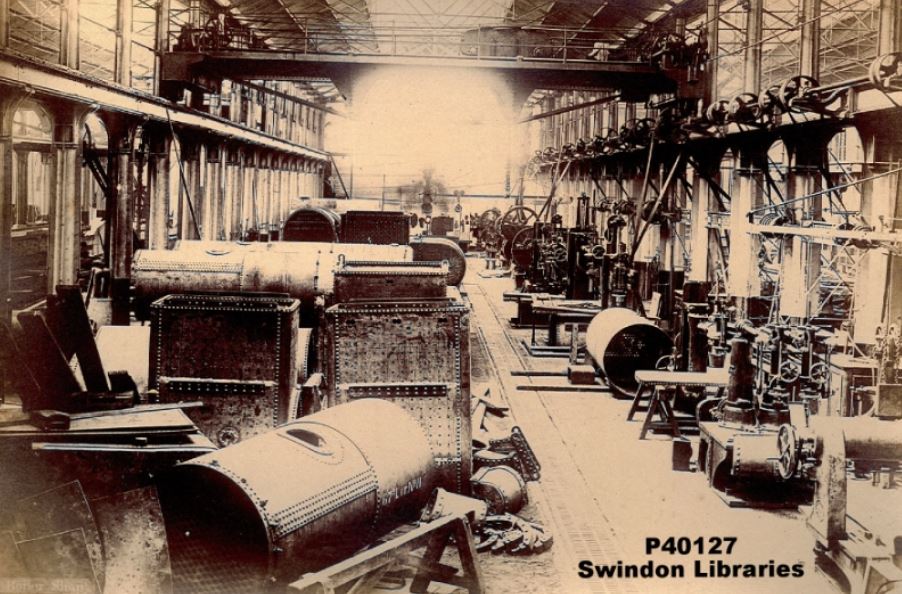Working in the GWR factory was a dangerous affair. Serious injuries were commonplace and even fatal accidents occurred such as the one that highlighted poor safety practise in the works in 1896.
Fifteen-year-old Matthew William Fox Burton had been working as a rivet boy for just seven weeks when he was involved in an horrific accident early one Tuesday morning. Matthew – known as William – was the second son of Matthew and Mahalah Maud Burton. He was baptised at St. Mark’s Church on August 9, 1880 when his father’s occupation was given as Engine Fitter. And like just about every other boy living in New Swindon at that time, William followed his father into a job in the railway works.
His duties as a rivet boy included cleaning out the rivet forge when on that morning an hydraulic pressure riveter weighing 35 cwt, suspended by chains from an overhead crane capsized.

Men working nearby carried William to the Medical Fund Hospital.
“But it is feared that he has sustained very serious internal injuries and that he will not recover,” reported the Advertiser.
William died in the hospital five days later; the cause of death was shock following the injuries he had sustained.
An inquest attended by Works Manager G.J. Churchward held at the Cricketer’s Arms on Monday March 2, 1896 heard how the accident in V1 (Boiler) Shop happened just after the men returned to work at 9 a.m.
Mr R.L. Dyer, the foreman of the shop, suggested that a very slight leak in the valves could have caused the machine to drop to the ground when the water was turned off while the men were at breakfast. The subsequent slackness in the chain may have caused it to slip from one of the two hooks that supported it.
The coroner adjourned the proceedings in order to inform the Inspector of Factories.
When the inquest reconvened on Wednesday afternoon the jury heard how as the machine was lifted off the boy it slipped again, landing on him for a second time.
Dr Simms, the assistant to GWR medical officer Dr Swinhoe, said the boy had a fracture of the upper jaw and left arm and extensive bruising of the chest and back.
The jury asked to examine the machine and the inquest was adjourned for a second time, much to the consternation of Mr Churchward.
When asked when the machine had last been officially inspected, Churchward replied that Mr Dyer and himself “would see it each time they passed it.” It became apparent that inspections were done on an ad hoc basis. Mr Maitland, the Inspector of Factories, said there was no definite period for examination or visits to factories.
The jury returned a verdict of accidental death but recommended greater precautions should be taken to prevent accidents with machines of this kind.
William’s funeral service was held on March 5 at St Mark’s, the church where he had been baptised. He was buried in grave plot C771, an unmarked public grave, with four other unrelated people.

My thanks to Debra and Peter Melsom who first brought this story to my attention. The story of Matthew Burton was originally published in the Swindon Advertiser on April 1, 2011.